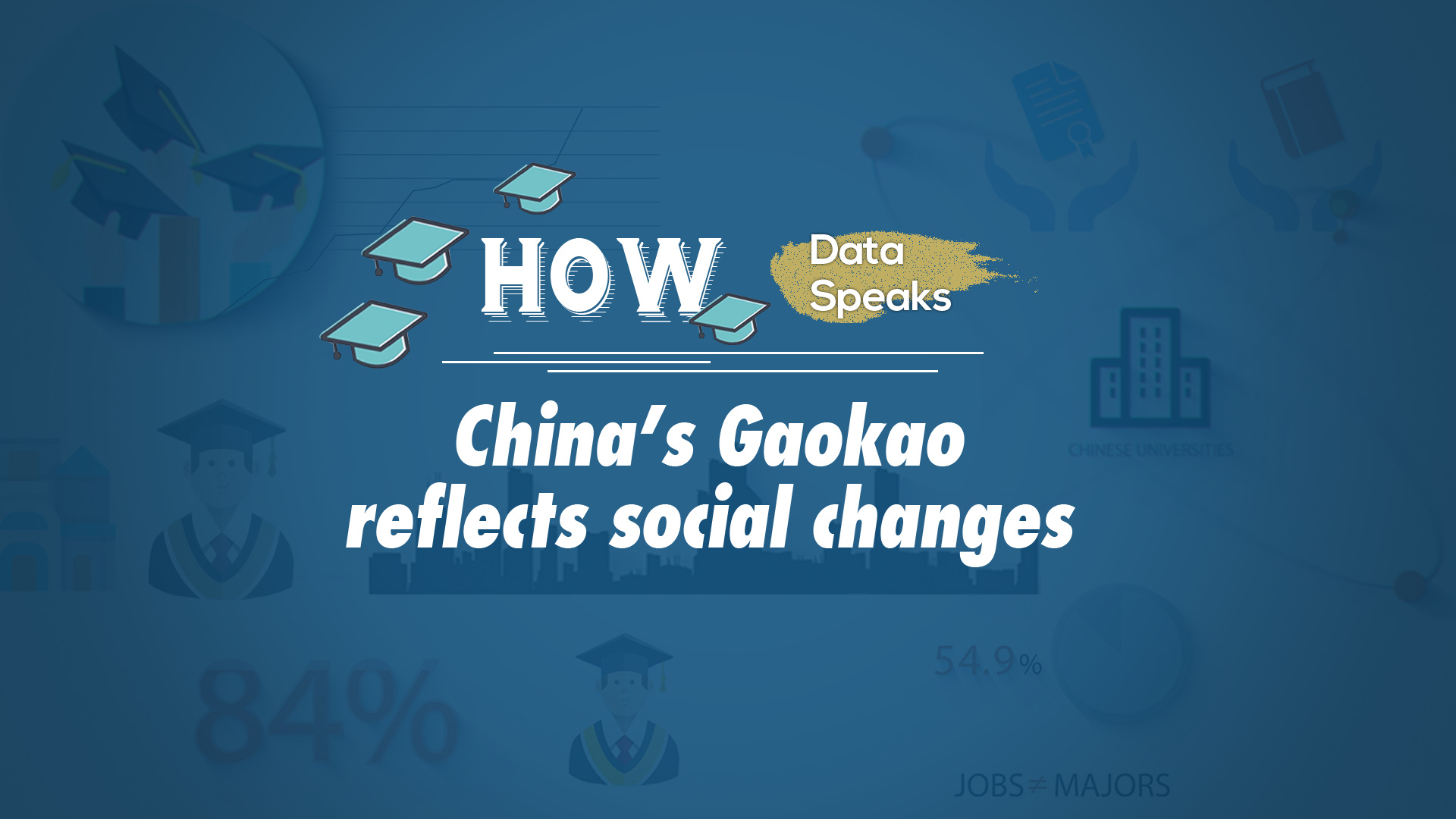
Opinion
09:18, 07-Jun-2019
How China's Gaokao reflects social changes
CGTN
04:10

Almost every student in China has to take a nerve-racking test after 12 years in school. The National College Entrance Examination, or Gaokao, takes place every year on June 7. It is a standardized test, the grades of which will determine which university each student will attend.
Gaokao is considered one of the most difficult tests in the world which people have portrayed as "an army of thousands of men trying to cross a single-log bridge." And this year, the number of students who are going to cross that bridge has broken the record of 10 million for the first time in ten years.
It's interesting to note that looking at the development of China's Gaokao system is like looking at a mirror of China's social changes.
In the winter of 1977, 5.7 million students took part in the test that had been halted for 10 years. With an enrollment rate of only 5 percent at that time, one test truly set a successful course for these talented students as they were already pre-booked by government bodies and enterprises.
In 40 years, the enrollment rate had increased to 81.13 percent in 2018. Behind this is the fast development of China's education system leading to the more universal tertiary level. These educated students have become the backbone of China's well-trained labor force who have participated and witnessed China's rise in the past decades.
But perhaps because of the popularity of college education, a bachelor's degree is not an advantage anymore in the job market. This can be partly reflected in the increasing number of students pursuing master's degrees. In 2019, more than 2.9 million people have signed up for the National Postgraduate Entrance Examination, a 21.8 percent increase over last year.
As China's household wealth increases, more people are also choosing to study abroad to add weight to their degree. China has already become the largest source of international students with over 660,000 going abroad for advanced studies. It is worth noting that over 84 percent of students choose to return to China after they complete their study abroad, which is a huge increase compared to only 5 percent of returning rate in 1987. This could be partly attributed to the tightening immigration policy, but also because they have seen the great potential for career development in China with its burgeoning market.
As the country's college education system has moved from being elite-centered to a universal tertiary system, the more urgent question now is perhaps what kind of education Chinese colleges should offer. There is still cut-throat competition to the top universities, but to most students, gaining skills they can use in the job market has become the priority.
According to a report co-released by Xiangcao Hiring and New Oriental, 54.9 percent of graduates in 2018 took a job that has no relation to their majors at school. In the meantime, more companies are in urgent demand of senior technicians to the point where the demand/supply ratio has been 2-1. With China restructuring its industries along with the development of automation, Chinese colleges seem to be responding slowly to these new changes to prepare students for the job market.
According to Xiong Bingqi, vice president of 21st Century Education Research Center, more than 80 percent of Chinese universities should perform vocational education and cultivate more technicians. As China is already on its way to providing more high-quality vocational education and reforming college courses, perhaps in the future, Gaokao may not be that intimidating as students can have more paths to a fulfilled life.
Animation consultant: Luo Qing
Animation directors: Wu Xiao, Song Yuhan
Animation post-production: Yuan Min, Song Yuhan and Wu Xiao
Script Writer: Zhao Yuanzhen
Copy editor: Bertram E. Niles
Voiceover: Mark Fontes
Producer: Bi Jianlu
Supervisor: Mei Yan
(If you want to contribute and have specific expertise, please contact us at opinions@cgtn.com.)

SITEMAP
Copyright © 2018 CGTN. Beijing ICP prepared NO.16065310-3
Copyright © 2018 CGTN. Beijing ICP prepared NO.16065310-3